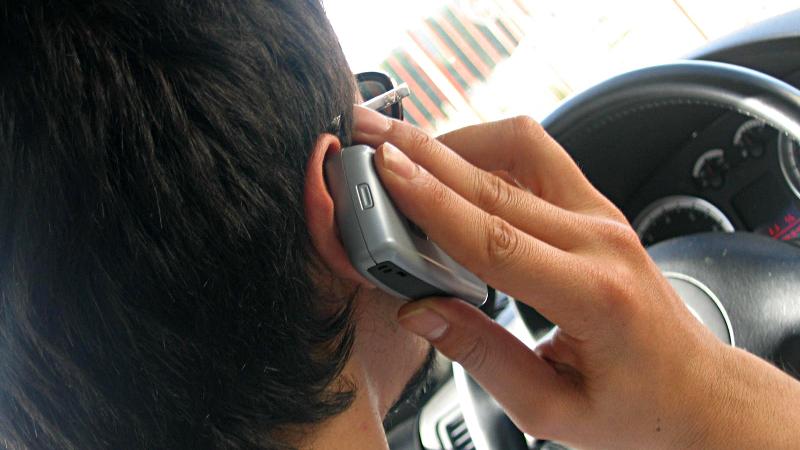
Talking hands-free on a mobile phone while driving is just as distracting as a conversation using a hand-held phone, despite one being illegal and the other not, a QUT road safety study has found.
Dr Shimul (Md Mazharul) Haque, from QUT’s School of Civil Engineering and Built Environment and Centre for Accident Research & Road Safety – Queensland (CARRS-Q), has presented his findings at a Driving Distraction Seminar held at QUT recently.
As part of the study, Dr Haque measured the effects of mobile phone distraction on safety including reaction time and driving performance in the CARRS-Q Advanced Driving Simulator.
“We took a group of drivers and exposed them to a virtual road network which included a pedestrian entering the driver’s peripheral vision from a footpath and walking across a pedestrian crossing,” Dr Haque said.
“We then monitored the driver’s performance and reaction times during hands-free and hand-held phone conversations and without.
“The reaction time of drivers participating in either a hand-held or hands-free conversation was more than 40 per cent longer than those not using a phone.
“In real terms this equates to a delayed response distance of about 11m for a vehicle travelling at 40km/h.
“This shows hands-free and hand-held phone conversations while driving have similar detrimental effects in responding to a very common peripheral event of a pedestrian entering a crossing from the footpath.”
Dr Haque said it was the cognitive load required to hold a conversation that was the distraction, not whether or not the driver was holding a phone.
“It appears that the increased brain power required to hold a phone conversation can alter a drivers’ visual scanning pattern.
“In other words the human brain compensates for receiving increased information from a mobile phone conversation by not sending some visual information to the working memory, leading to a tendency to ‘look at’ but not ‘see’ objects by distracted drivers.
“The distraction of a mobile phone conversation is not the same as an in-car conversation with a passenger because the non-driver can alter their dialogue based on the driving environment, for example stop talking when approaching a complex driving situation.
Dr Haque said this raised a serious question on the appropriateness of mobile phone use laws while driving in Queensland, which only impose a ban on hand-held mobile phone use but allowed drivers to use mobile phones with a hand-free device.
He said in addition, the study also found the reaction time of provisional licence holders was double compared to those who held an open licence.
“Despite provisional licence holders in this study averaging a driving experience of more than two years, the detrimental effects of mobile phone distraction showed P-plate drivers had an increased probability of failing to detect a pedestrian.”
Dr Haque said the distraction of mobile phone use also had an impact on driver braking behaviour.
“Distracted drivers on average reduced the speed of their vehicle faster and more abruptly than non-distracted drivers, exhibiting excess braking,” he said.
“While the driver is likely to be compensating for the perceived risk of talking and driving, the abrupt or excessive braking by distracted drivers poses a safety concern to following vehicles.
“Again these findings highlight a need to consider mobile phone use laws in response to interventions to reduce rear-end crashes.”
Media contact:
Sandra Hutchinson, QUT Media (Tue, Wed), 07 3138 9449 or media@qut.edu.au
After hours, Rose Trapnell, 0407 585 901


